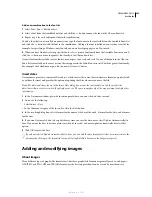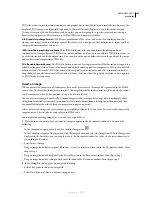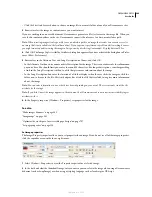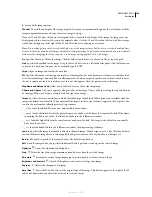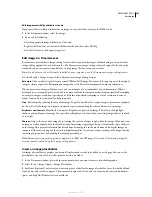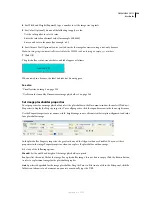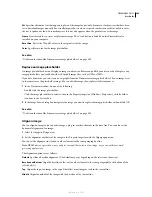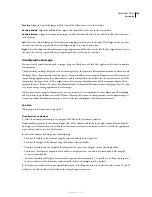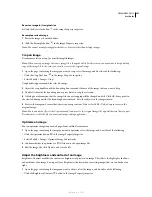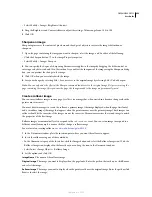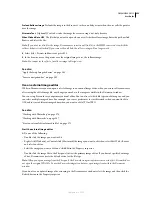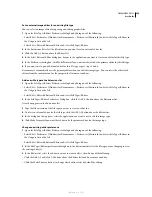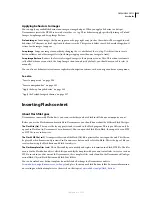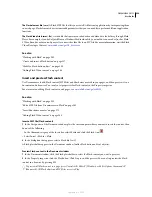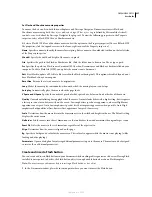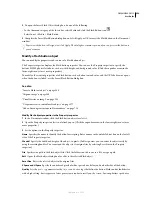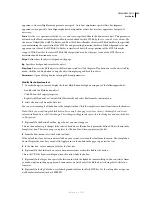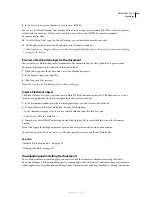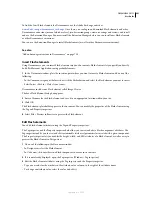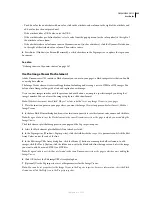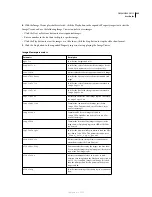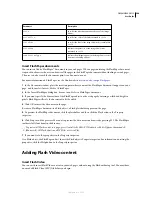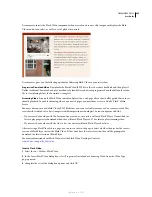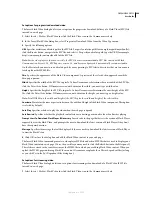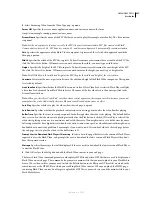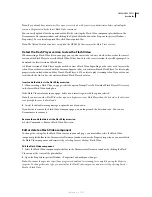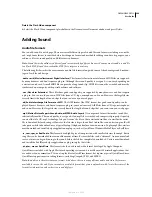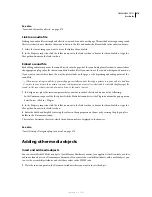
DREAMWEAVER CS3
User Guide
255
Applying behaviors to images
You can apply any available behavior to an image or image hotspot. When you apply a behavior to a hotspot,
Dreamweaver inserts the HTML source code into the
area
tag. Three behaviors apply specifically to images: Preload
Images, Swap Image, and Swap Image Restore.
Preload Images
Loads images that do not appear on the page right away (such as those that will be swapped in with
behaviors, AP elements, or JavaScript) into the browser cache. This prevents delays caused by downloading when it
is time for the images to appear.
Swap Image
Swaps one image for another by changing the
SRC
attribute of the
img
tag. Use this action to create
button rollovers and other image effects (including swapping more than one image at a time).
Swap Image Restore
Restores the last set of swapped images to their previous source files. This action is automati-
cally added whenever you attach the Swap Image action to an object by default; you should never need to select it
manually.
You can also use behaviors to create more sophisticated navigation systems, such as a navigation bar or a jump menu.
See also
“Insert a jump menu” on page 290
“Insert a navigation bar” on page 292
“Apply the Swap Image behavior” on page 363
“Apply the Preload Images behavior” on page 357
Inserting Flash content
About Flash file types
Dreamweaver comes with Flash objects you can use whether you have Flash installed on your computer or not.
Before you use the Flash commands available in Dreamweaver, you should know about the different Flash file types:
The Flash file (.fla)
The source file for any project and is created in the Flash program. This type of file can only be
opened in Flash (not in Dreamweaver or in browsers). You can open the Flash file in Flash, then export it as an SWF
or SWT file to use in browsers.
The Flash SWF file (.swf)
A compressed version of the Flash (.fla) file, optimized for viewing on the web. This file can
be played back in browsers and previewed in Dreamweaver, but cannot be edited in Flash. This is the type of file you
create when using the Flash button and Flash text objects.
The Flash template files (.swt)
These files enable you to modify and replace information in a Flash SWF file. The files
are used in the Flash button object, which lets you modify the template with your own text or links, to create a custom
SWF to insert in your document. In Dreamweaver, these template files can be found in the Dreamweaver/Configu-
ration/Flash Objects/Flash Buttons and Flash Text folders.
You can download new button templates from the Adobe Exchange for Dreamweaver website
(
www.adobe.com/go/dreamweaver_exchange
) and place them in your Flash Buttons folder. For more information
on creating new button templates, see the article on that topic at
www.adobe.com/go/flash_buttons
.
September 4, 2007



